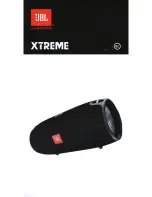
Page 6
3113-00
60706-156
Notice the preceding tables give two (2) different units of measur-
ing fuel pressure. The first is with a pressure gauge calibrated in
ounces per square inch. The second and most accurate is the
use of a simple water manometer. A manometer is calibrated in
inches of water column.
LP LIQUID WITHDRAWAL SYSTEMS
When installing a unit equipped the LP liquid withdrawal a
primary regulator is not required on the supply tank. The supply
line is connected to a liquid withdrawal valve on the supply tank
and run directly to the fuellock strainer mounted on the engine
generator set. Normally a 3/8 inch copper line is acceptable for
this type of fuel installation. You must be sure that the valve you
have connected to on the supply tank is in fact a liquid supply
valve and has a drop tube inside the tank that is pulling fuel from
the bottom of the supply tank. Before starting the unit you must
confirm that you have a good liquid supply at the unit. Engine
generator sets equipped for liquid withdrawal will not run
properly when supplied with high pressure vapor fuel.
LUBRICATION
Before starting the engine, check the oil level in the crankcase. If
it is low, refill to the full mark with the proper weight/grade of oil as
recommended by the engine manufacturer’s maintenance
instructions. The necessity of using the correct oil, and keeping
the crankcase full cannot be over emphasized. Failure to use the
proper oil and keep the crankcase properly filled will cause
excessive engine wear and shorten its useful life.
COOLANT
Before starting the engine, check the coolant level in radiator. If it
is low, refill as specified in the engine manufacturer’s mainte-
nance instructions. The radiator should be filled to about 1 inch
below the filler neck. For additional information on engine coolant
requirements see engine manufacturer’s maintenance instruc-
tions.
INSTALLING THE BATTERY
**** CAUTION ****
EQUIPMENT DAMAGE - In the following battery installation
procedure, check to be sure the selector switch remains in the
“stop” position.
A customer supplied twelve-volt BCI group 24 battery rated 650
CCA (minimum) is required to complete the installation. Install
the highest CCA rated battery available for best cold weather
starting performance.
****WARNING*****
EQUIPMENT DAMAGE - Always connect the positive battery
cable first and the negative cable last. When disconnecting a
battery always disconnect the negative cable first and the positive
cable last. Failure to follow these steps can cause arcing at the
battery post which can cause damage to both the engine and the
engine control module.
Observe polarities: Connect the positive (+) battery terminal to
the (+) cable from the control panel; the negative (-) battery
terminal is connected to the negative cable (ground) from the
engine generator assembly.
NOTE: Always make sure that a new battery is fully charged
before installing it on a generator set. Failure to do so can cause
damage to the engine control module in the generator set.
All connections must be clean and tight. Check the electrolyte
(fluid) in the battery periodically to be sure it is above the plates.
Never allow the battery to remain in a discharged condition.
CONNECTING THE BATTERY CHARGER &
BLOCKHEATER
A two-stage battery tender is provided on all PSS series genera-
tors. This battery tender charges at a rate of 750 mA until the
battery is fully charged and then automatically switches to a 13.2
VDC float charger. The charger has an indicator light on it, red
indicates it is charging, and green indicates it is in the storage
mode (float charge). This charger is mounted on the engine
generator set just below the engine control panel.
** NOTICE **
The trickle charger is not intended to recharge a battery which
has become completely discharged. It is designed to produce
just enough current to maintain a fully charged battery.
This battery tender requires a circuit breaker protected AC circuit
from your distribution panel be run out to the engine generator
set. These AC wires can be run in the same conduit as the other
AC leads from the generator. It is suggested that this circuit be
fused for 15 amps, then both the battery charger and the block
heater can be connected to the same circuit. A 120 volt duplex
receptacle is mounted on the generator just below the engine
control panel, the battery tender is shipped already plugged into
the receptacle.
The engine frost plug heater has been prewired with a 120 volt
plug which can be plugged into the other side of the duplex
receptacle after wiring 120 volt power feed to the receptacle. The
frost plug heater has been prewired through a temperature
sensor which will turn the heater on when the air temperature
drops to 22 degrees F. and off when the air temperature reaches
30 Degrees F.
MOUNTING THE AUTOMATIC TRANSFER SWITCH
(WINCO Non-UL only)
The automatic transfer switch (A.T.S.) connects the load (lights,
furnace, outlets, etc.) to the normal power line. When normal
power fails, the A.T.S. starts the engine generator set, discon-
nects the power line and then connects the load to the standby
generator set. When normal power is restored, the automatic
switch retransfers the electrical load to the normal service and
stops the engine. The A.T.S. panel should be mounted as close
to the distribution panel as possible.






































